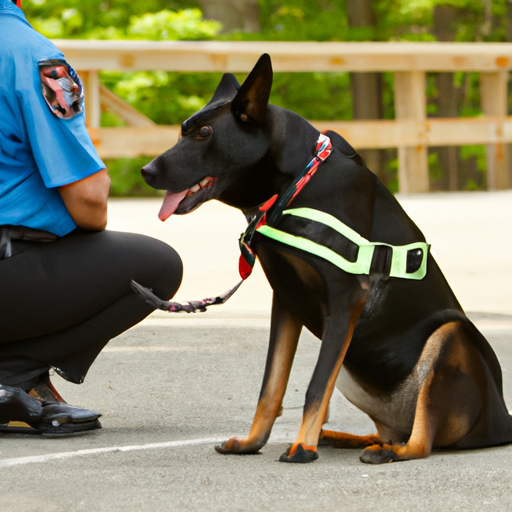When you think of a K9, what comes to mind? Most likely, it’s an image of a dog in a police vest, ready to spring into action at a moment’s notice. But have you ever wondered how K9 dogs are trained? It’s a complex process that involves rigorous training, a deep understanding of dog behavior, and a strong bond between the dog and its handler. Let’s delve into the fascinating world of K9 training.
Table of Contents
- Understanding K9 Dogs
- The Training Process
- Specialized Training
- The Role of the Handler
- Frequently Asked Questions
Key Takeaways
- K9 dogs undergo rigorous training to become specialized in tasks such as bomb detection, search and rescue, and drug sniffing.
- The training process is a balance of reward-based techniques, discipline, and building a strong bond between the dog and the handler.
- Specialized training programs are tailored to the specific needs of the dog and its future role.
Understanding K9 Dogs
K9 dogs, also known as police dogs or service dogs, play an integral role in many police forces and military units around the world. These dogs are specifically trained to assist their handlers in tasks that humans may find difficult or impossible. This includes detecting explosives, finding missing persons, and tracking down criminals.
These dogs are typically breeds that are known for their intelligence, strength, and reliability. Breeds such as German Shepherds, Belgian Malinois, and Labrador Retrievers are common choices for K9 units. You can learn more about these breeds and their traits on One Top Dog.
The Training Process
Training a K9 dog is a complex process that begins when the dog is just a puppy. Initially, the dogs are socialized and exposed to various environments to help them become comfortable in different situations. This early exposure helps them to be adaptable and fearless, traits that are essential for a successful K9.
Next comes the basic obedience training. This includes commands such as sit, stay, and come, as well as walking on a leash. This forms the foundation for all the specialized training that will come later. You can find some excellent resources on basic obedience training on this page.
Reward-based training methods are often used during this phase. The dogs are given a treat, praise, or a favorite toy as a reward for performing a command correctly. This positive reinforcement encourages the dogs to repeat the behavior.
Specialized Training
Once the dogs have mastered basic obedience, they move on to specialized training. This is where they learn the skills they will need for their future roles. The type of specialized training a dog receives depends on its intended role. For example, if a dog is going to be a bomb-sniffing dog, it will undergo bomb detection training. This involves teaching the dog to identify the specific scents of various explosives. You can learn more about this specialized training on the One Top Dog website.
This specialized training is often done using a combination of reward-based techniques and real-world simulations. The dogs are slowly introduced to the scents they need to recognize and are rewarded for correctly identifying them. They are then exposed to these scents in various scenarios to help them understand how to apply their training in real-world situations.
The Role of the Handler
The role of the handler in K9 training is crucial. The handler and the dog must form a strong bond, as they will be working closely together. The handler is responsible for ensuring the dog’s wellbeing, managing its training, and guiding it during operations.
Handlers are often paired with their dogs early in the training process to facilitate this bond. They work together through all stages of training, from basic obedience to specialized tasks. This relationship between the handler and the K9 is a key factor in the success of the unit.
Frequently Asked Questions
1. How long does it take to train a K9 dog?
Training a K9 dog can take anywhere from a few months to more than a year, depending on the specific role the dog will fulfill.
2. Can any breed of dog be trained as a K9?
While any dog can be trained for basic obedience, specific breeds are often chosen for K9 work due to their intelligence, strength, and reliability.
3. Do K9 handlers keep their dogs after retirement?
In many cases, yes. After a K9 dog retires, it is often adopted by its handler.
4. How are K9 dogs chosen for training?
Dogs are chosen based on a variety of factors, including breed, temperament, and physical fitness.
In conclusion, the training of K9 dogs is a meticulous process that involves both the dog and its handler. Through a combination of basic obedience, specialized training, and a strong bond between the handler and the dog, these canine heroes are prepared to serve and protect.



